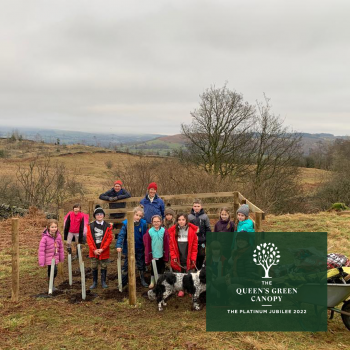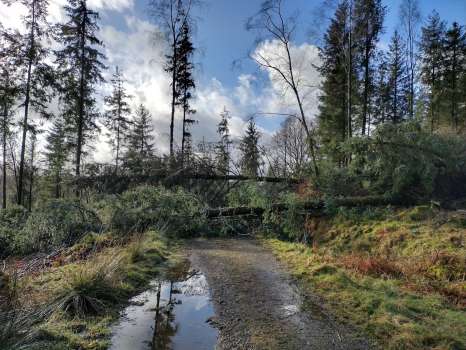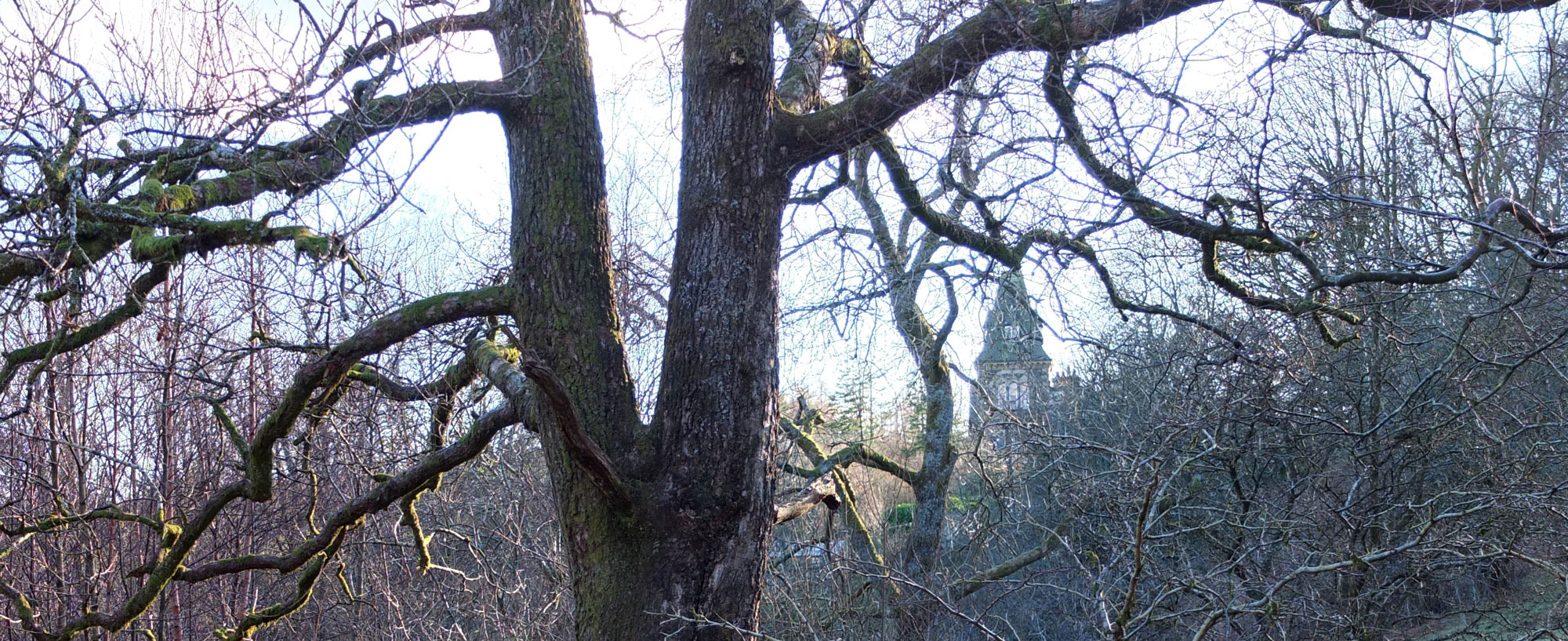After a winter break on the blog and some slow time for us gardeners, it’s time to get back to work. In mid January we had our local primary school children come up and plant trees for the Queen’s Green Canopy. If you go on to the QGC website http://www.queensgreencanopy.org you will see us. The children planted two trees each and we gave the trees the ‘royal’ treatment. Along with them being enclosed in rail fencing to keep out deer and ponies, they had additions of compost and mycorrhiza fungi, individual mats to shade out weeds and keep in moisture and canes and guards to keep out hares and voles. We built 5 enclosures and the planting followed the old adage that ‘thorn is mother of the oak’. Each small enclosure had three hawthorn planted around an oak and with the larger enclosures such as the one in the photo we also planted cherry and hazel with a couple of oaks surrounded by hawthorn. In time these plantings will create a wood pasture effect softening the boundary of our species rich hay meadows and the forest.

Another 400 trees are being planted this winter in our 20 hectare forest. Some are replacements for ones that have died, what foresters call ‘beating up’, with others filling in gaps where trees have fallen in recent storms or removed because of larch disease. We reported on Storm Arwen in our last post but recent storms have bought down even more giants. We’ve never seen a winter like it. I have been taking a Woodland Trust online course on Managing Ancient Woodlands. We have remnants of native woodland and a three ha area of PAWS ie Plantation on Ancient Woodland Site. An important point made in the course is that the best thing we can do to improve biodiversity is to have a lot of dead wood. They say we should be aiming for 40 m3 per hectare. In a mature well managed plantation such as ours there will be around 200 trees per hectare so that means around 40 trees should be left to rot when they are harvested or come down in a storm. I doubt there are few foresters would allow for that to happen as 40 m3 of good saleable timber could earn one £300 plus. The consequence of harvesting everything that has marketable value is that eventually forest soils are depleted and invertebrates that require rotting wood are few and far between. With the recent storms we have a lot of lying trees blown over with their root plates vertical. Our dilemma is do we let them lie or harvest them and send them to the mill. After taking this course I’m inclined to leave most of them to lie and decompose. Don’t tell my forester friends.

It has been a winter for study. Along with the ancient woodland course, we’ve also been taking an online courses in botany and on meadow management with the excellent charity Plantlife. One thing that we used to do in the early days at Yewfield was to monitor our various habitats on the land here. It is important to monitor vegetation to see if there is any change in the habitat and then to manage any unwanted features such as invasive plants, too much or too little grazing, nutrient imbalances and so on. We lapsed in our monitoring over the years but these well organised and well presented courses have renewed our enthusiasm.

It is the time of year for snowdrops. Even tho we have picked it before it has to be our plant of the month. Our clumps on grass and in beds are slowly spreading vegetatively as it is rarely warm enough for pollination to produce seed. On those rare warm sunny days, of which we have had none so far this month, our bees search them out. And to hear bees out and about pollinating snowdrops, that really lifts the spirits.
Go back to all blog posts or read the next entry in our blog here →
You can also read the previous blog post here.
